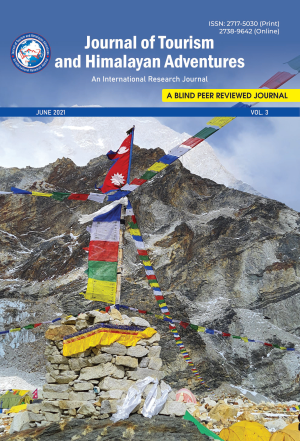Conservation of Gosainkunda and Associated Lakes: Morphological, Hydrochemistry, and Cultural Perspectives
DOI:
https://doi.org/10.3126/jtha.v3i1.39119Keywords:
Alpine Lake, Himalaya, hydrochemistry, satellite imagery, surface areaAbstract
In this paper, we present the current situation of the Gosainkunda and associated lakes based on the preparation of an inventory of lakes using the Google Earth Engine and 2020 Sentinel 2A satellite imagery. Furthermore, we discuss the hydrology, hydrochemistry, and cultural significance of the lakes based on the systematic review of available literatures. In 2020, there are 22 lakes along with Gosaikunda (12.7±0.4 ha) in the Upper Trishuli watershed (59.2 km2), extending from 1274 to 4993 m elevation and covering a total area of 80 ha. The largest lake is Bhairabkunda, with an area of 15.5±0.5 ha. The water bodies in the region are drying, and some of the lakes have already disappeared from the region. But some lakes in the region are evolving as temporary water bodies. The high-altitude lakes are sensitive indicators of anthropogenic disturbance and changing climate. Though the lakes have better hydrochemical quality than the urban lakes located in the southern part of the country, the evidence shows increasing local and long-range transport and deposition of the pollutants in the lake water. The presence of chemical constituents of anthropogenic sources in the water of oligotrophic lakes is possibly evidence of the long-range transport of pollutants. Considering the cultural importance of the region, the number of visitors is increasing annually. Increasing human activities in and around the lake, long-range transport of pollutants, and changing environment in the area are demanding for the lake's conservation. We suggest regular monitoring of the high-altitude lakes to understand the ongoing climate change and anthropogenic impacts.




